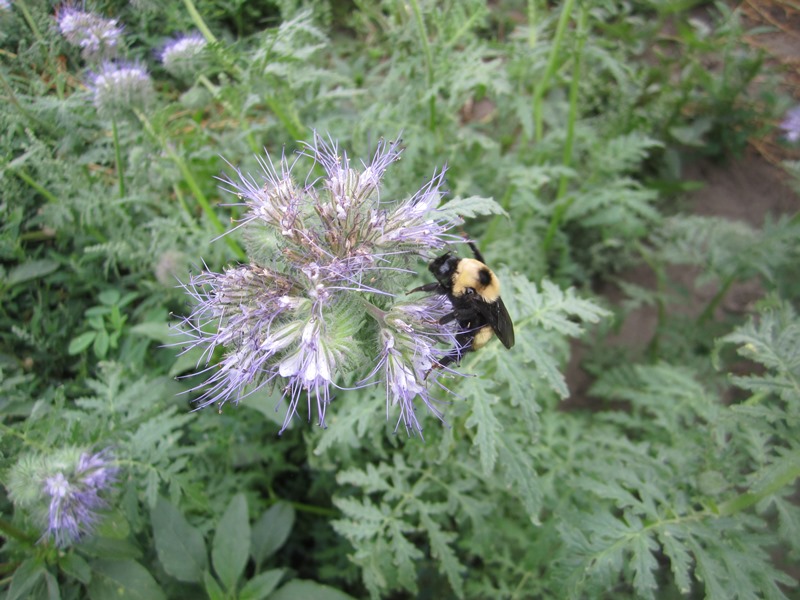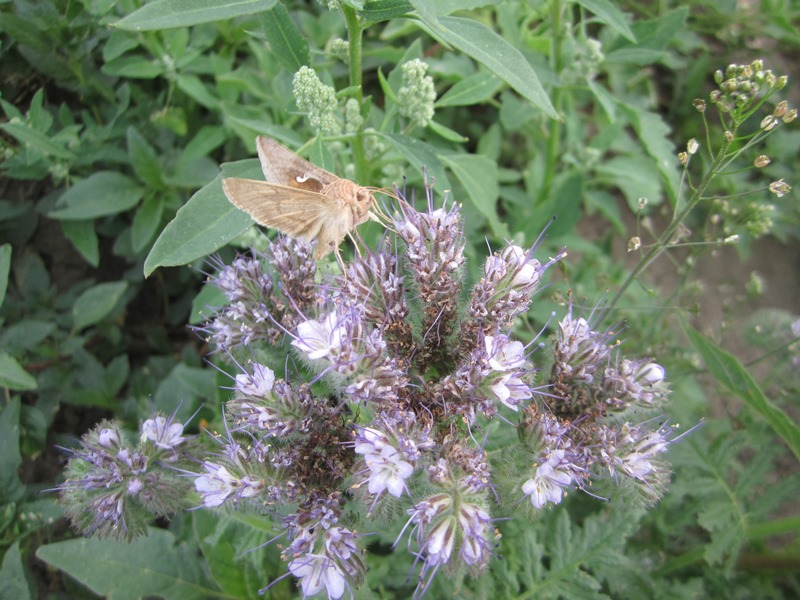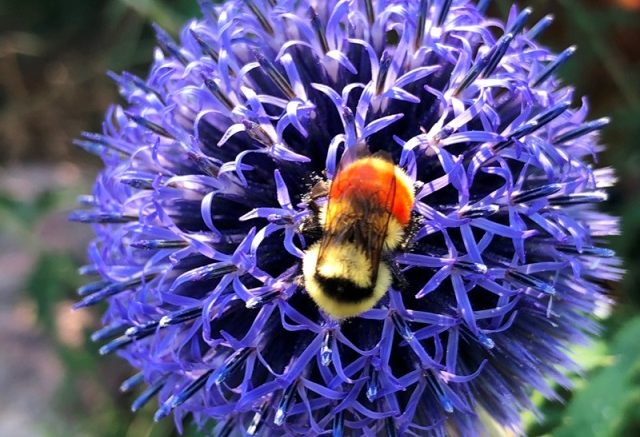Insect pollinators in peril
Anthropogenic factors are leaving big footprints in our natural ecosystems and environments around the planet negatively impacting global biodiversity. One of the worst impacted species around the planet with serious long term consequences for agriculture, forestry and apiculture are the honey bees and native (indigenous) bees. Researchers around the planet have identified numerous anthropogenic factors that are responsible directly or indirectly for the demise of pollinator insects with the worse impacted group recognized being different bee species like honeybees and native bee species. Among some of the most commonly reported anthropogenic factors responsible for rapid and alarming decline of global bee populations being non-judicious, over application of agri-chemicals, environmental pollution, changes in land use patterns, various parasitic diseases, Colony Collapse Disorder (CCD), rapid rate of pollinator habitat loss and habitat fragmentation, lack of suitable melliferous flora (bee foraging or

Challenges towards successful insect pollinator/bee conservation
- Lack of education and awareness among the public regarding the need and importance of pollinator conservation
- Lack of communication and networking between ordinary citizens and various stakeholders associated with pollinator (bee) conservation such as distinguished researchers and scientists, primary, secondary and tertiary level students, nature journalists, environmental lawyers, local administrators and politicians, technical and administrative personnel associated with relevant industries such as farmers and crop producers,
agrologists , agronomists, apiculturists, entomologists, foresters, environmentalists, ecologists and conservators.
Why do we need a bee app?
It is therefore important to develop an app for our targeted communities or stakeholders associated with bee/pollinator conservation by connecting them via a simple, communicative global platform technology affordable and accessible by all. It should be as simple as possible and can be comfortably downloaded on smart and android phones, desktops, laptops, tabs and related communication based electronic accessories that can serve as an information highway for exchanging pollinator insect/bee related data and information easily. Some examples are like taking images of bees and other insect pollinators around the globe, processing and identifying them and finally storing them into a registered, accessible and highly secure online database/archive for public education and research purposes. Such an app could help in the exchange of pollinator insects/bee related research data, facilitate positive communication and discussion among stakeholders to promote necessary education and awareness among public, academia, media, politicians, parliamentarians, administrators and policymakers to adopt necessary actions and formulate important policies to help in successful insect pollinator conservation like our bees.

Tentative target features of the App:
- Our goal through this app development is integrating ecology and environment together as one cannot move forward with the help and support of the other. Ecology and economy
needs to be integrated in a comprehensive manner so that ordinary citizens can enjoy the stability of the economy and at the same time become sensitive towards environmental conservation by developing a green economy. - Any pollinator insect could be photographed and processed through the app for quick identification. These could be honey bees, native bees, flies, beetles and other insect pollinators. This will help farmers, researchers and other stakeholders involved bee/pollinator conservation via quick and authentic identification to take appropriate measures in protecting them.
- It could act as a source of information highway and connectivity between various stakeholders like agricultural companies, crop producers, retailers, distributors, apiculturists, researchers and academics, conservationists, journalists, students, lawyers and ordinary citizens; as well as various related government and non-government organizations.
- This could be a mode of communication like very popular apps like WhatsApp, Yammer and other related apps and services and help in building connections among various stakeholders across different countries and continents
- Establishing knowledge chain and knowledge networks among different stakeholders involved in bee and pollinator conservation. This could be easily connected to challenges of environmental pollution such as Climate Change and Global Warming, low agricultural productivity due to a decline in pollinator populations across the globe.
- Could serve as an important connectivity pathway related to bee conservation across US and Canada through citizen participation, blog writing, snap chat facilities like exchanging data, images and videos among stakeholders with the end to end encryption; so that no 3rd party could access any valuable information and research data exchanged between 2 or more participants.
- The app should facilitate the exchange of different photos, videos, files, texts, messages for high-level communication among two or more individuals and/or dedicated groups.
- Facilities for posting general messages, contents, text and images for fast and integrative communication.
- Additional applications:
- Prediction of future changes in the dynamics of pollinator population based on research information accumulated through numerous app users.
App will be tagging every image captured by any app user viain built GPS & GIS technology to record precise location, date & time of individual images.- Developing
latest distribution maps for individual pollinator species captured and processed by the app by using available data. - App predicting
possible impact on agriculture, forestry & apiculture industries based oneconomic impact of different pollinator species across different agro-climatic zones usingapp based models. - App could act as a pivotal tool in connecting primary, secondary and tertiary levels of education in US and Canada and making them more aware regarding bee/pollinator conservation, environmental pollution, Global Warming and Climate Change, sustainable agriculture, supporting nationwide forestry, supporting farmers and apiculturists and helping in establishing bee, bird, fish in establishing integrated habitats.
- Making administration of local cities, towns, municipalities, district headquarters aware about pollinator conservation through
establishment of pollinator habitats and establishing small ecological niches for protecting and securing the environment. - Protection and conservation of global biodiversity.
- Promoting chemical free organic agriculture, sustainable farming system and eco-friendly farming practices and throughout the planet cutting across the socio-economic and socio-cultural divisions of the developed, developing and
under developed nations in northern and southern hemispheres. - Creating a platform for people to share, exchange, discuss, collect and retrieve information related to bee and pollinator conservation, sustainable agriculture,
chemical free agriculture, eco-friendly farming practices, establishing pollinator or bee habitats across various agro-climatic zones or ecological zones. - Education and awareness of the general public across different countries and continents.
- Creative app with dynamic parameters to draw more participants enthusiastic in bee and/or pollinator conservation and in conserving nature and environment.
- Building awareness and education regarding bee and/or pollinator conservation among researchers, farmers, students, lawyers,
justice system, administration, industry and general public representing ordinary citizens at various works of life. - Establishing direct and indirect communication links and channels among all stakeholders interested in bee and/or pollinator conservation.
Future directions:
- Reaching out to target users for getting an insight into what they would like to use the bee app for.
- Increase our research capabilities and our ability to cater to the needs of target users/customers in developing a highly efficient and secure multi-use bee app.
- Learn from our experiences and advance our knowledge to cater to the target users by developing
necessary partnership with interested stakeholders and similar minded institutes and organizations for shared growth and serve as industry leaders.
Writes: S K Basu


Be the first to comment on "Bee App could be the Next Best Thing for Facilitating Global Insect Pollinator Conservation"